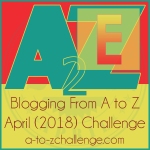 Not all country houses began life as Medieval Great Halls. Eggington House in Bedfordshire is an example of domestic English architecture and was built in 1696. Country dwellings weren’t usually as ‘modern’ as their city equivalents, but the builders of Eggington weren’t going to be outdone by the city folk. Who acquired the estate and built the house?
Not all country houses began life as Medieval Great Halls. Eggington House in Bedfordshire is an example of domestic English architecture and was built in 1696. Country dwellings weren’t usually as ‘modern’ as their city equivalents, but the builders of Eggington weren’t going to be outdone by the city folk. Who acquired the estate and built the house?
 Huguenot is a term used to describe French Protestants and members of the Reformed Church of France from the early 1500 to 1800s. By 1562, their numbers peaked at 2 million and roughly 10% of the French population. Wars broke out between Catholics and Protestants, known as the French War of Religion, until peace almost brought things to an end with an edict in 1598 granting Huguenots some liberties. Unfortunately, it didn’t last and as with the St Batholomew’s Day Massacre in 1572, when thousands were slaughtered, Huguenots were forced out of France in waves by successive French kings. It wasn’t until 1789 that Protestants gained equal rights as citizens in France. Where did the Huguenots go? Everywhere. The diaspora is largely a forgotten event in history, but the legacy lasts to this day.
Huguenot is a term used to describe French Protestants and members of the Reformed Church of France from the early 1500 to 1800s. By 1562, their numbers peaked at 2 million and roughly 10% of the French population. Wars broke out between Catholics and Protestants, known as the French War of Religion, until peace almost brought things to an end with an edict in 1598 granting Huguenots some liberties. Unfortunately, it didn’t last and as with the St Batholomew’s Day Massacre in 1572, when thousands were slaughtered, Huguenots were forced out of France in waves by successive French kings. It wasn’t until 1789 that Protestants gained equal rights as citizens in France. Where did the Huguenots go? Everywhere. The diaspora is largely a forgotten event in history, but the legacy lasts to this day.
Merchant tailor, John Renouille, anglicised his name to Reynal, prospered as a tailor in London and built Eggington – three storeys, a basement and all in red-brick, very square and Queen Anne in style. Like many Huguenots, he brought his trade with him from France. An estimated 50,000 French and Belgium protestants fled to England in what is consider the largest immigration of an single ethnic group in England’s history. They sought out Calvinists, and other protestant groups. Sympathiser Edward VI granted them the right to hear services in French in the crypt of Canterbury Cathedral, a service that continues to this day every Sunday in a smaller chapel.

Canterbury, Kent
Huguenots were amongst many things primarily weavers, and they introduced a particular style of architecture to their buildings: weaver’s windows. Large upper storey windows that brought light into their workshops. They influenced other professions, from glassmakers to lacemakers, and settled in these communities. They contributed to the economy. Winston Churchill is descended from Huguenots.
The house must have represented an achievement for the John Reynal who became sheriff of Bedfordshire.
Later, Eggington was rented out to notable tenants and the subsequent descendants of Reynals until the 20th century when the Hodgson family acquired it, and during the WWI the house was a convalescent home for wounded soldiers. Joan Hodgson was friends with suffragette Sylvia Pankhurst, daughter of Emmeline Pankhurst. Sylvia and Joan Hodgson were both part of the movement and Joan was Mrs Pankhurst’s secretary.
The house is own by a different family now, and remains a private home, but like many grand houses, it likes to hold weddings!
Sign up to Rachel’s Readers for the First Chapter of The Women of Heachley Hall










Enlightening as ever. The weaving windows is a nice touch, we don’t often hear about those. Nice pics too.
LikeLike
I’d never heard of weavers’ windows until I read up about this house. I’m educating myself!
LikeLiked by 1 person
Haha!
LikeLike
I cross the little bridge by the Weavers House often, but I’ve never thought to look into the reason behind the buildings’ name! Another day another lesson – thank you.
My Friend Rosey – E is for Employment
LikeLike
I regret I can’t remember seeing the weaver’s house on one of my many shopping days in the city.
LikeLike
It’s a restaurant now and it’s half way down the High Street. There is a witches ducking stool attached to its side!
LikeLike
Canterbury! I live next to Canterbury 🙂 The windows in Eggington House are hynotising, it’s like they’re dragging you towards the building.
Tasha
Tasha’s Thinkings – Movie Monsters
LikeLike
I lived in Sittingbourne for a few years 🙂
You’ll have to stop by for letter G – the windows are a feature of that post too.
LikeLike
My father was a volunteer chaplain at Canterbury Cathedral in his younger days.
I like the look of Eggington House, sturdy and welcoming. 🙂
Sophie
Ghostly Inspirations – Sophies A to Z
LikeLike
I loved sitting in Canterbury cathedral, such a magnificent place.
It’s a good size house too. Not too big – I might manage to cope with the scale.
LikeLiked by 1 person
Beautiful. Incredible information.
LikeLike
I’m happily married myself, but who knows, someday we might renew our vows in one of these amazing manor homes!
Jamie Lyn Weigt | Theme: Odds and Ends Dragons | Writing Dragons
LikeLike
Weavers Windows and suffragists. I wonder if they were used in lace-making? Probably not until the industrial revolution. So many women ruined their eyesight making lace in their dark homes. Light is so important!
LikeLike